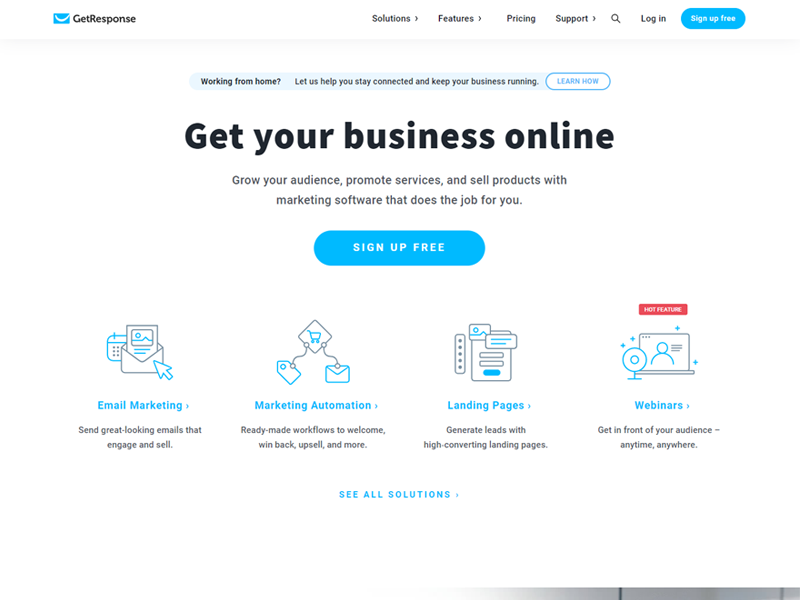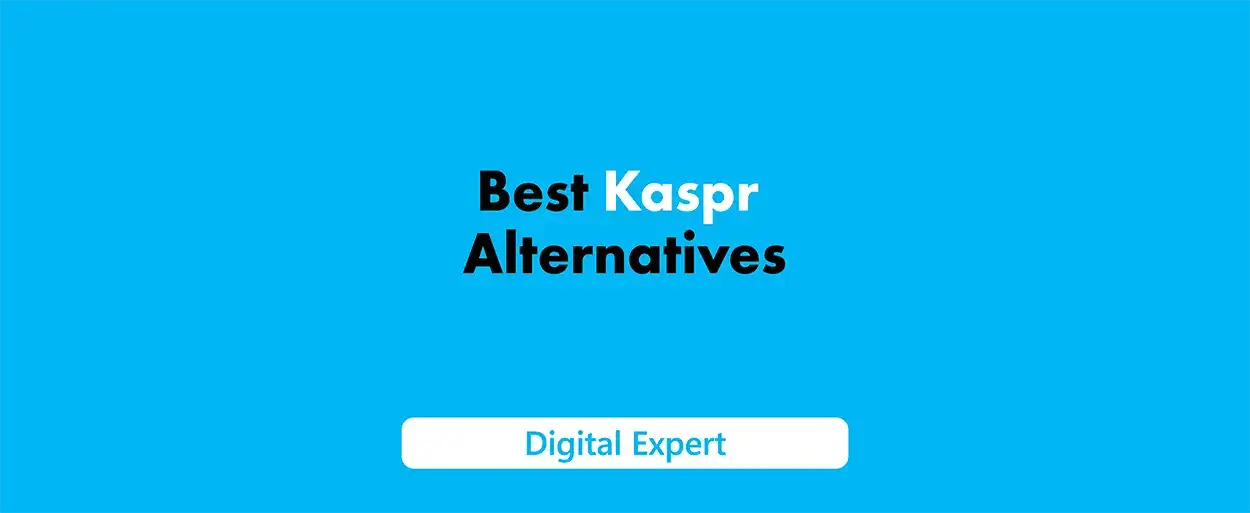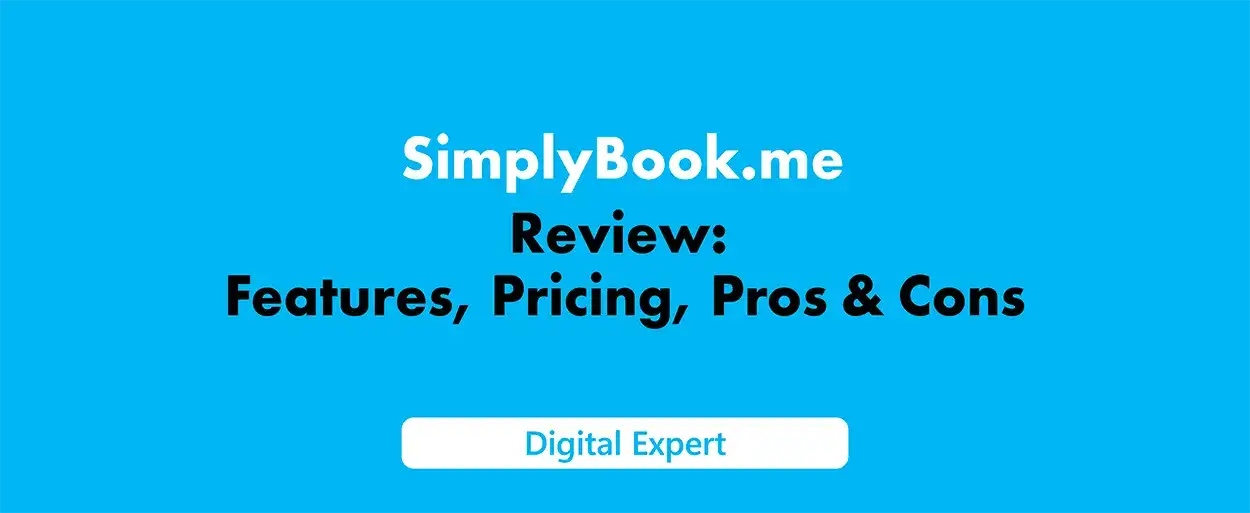In 2025, Gmail is still one of the leading service providers in emailing platforms with an expected consensus of more than 2.5 billion active users, 15 GB of storage space allocation, and powerful security including two-factor authentication and a 24-hour lockdown feature. With features that rival Yahoo Mail, its clear and user-friendly interface, integration with Google Workspace, Google Drive, and other services, as well as support for advanced search functions, make it a household personal and basic business communication tool.
Nonetheless, in case a company wants to develop a complex email marketing effort, Gmail does not suffice since it cannot provide advanced email marketing features such as automation, segmentation, and analysis. We will examine, below, eight of the best email marketing solutions, which are the perfect accompaniments to the email marketing approach of any business in 2025.
The functionality of these platforms (HubSpot, ActiveCampaign, GetResponse, Brevo (Sendinblue), MailerLite, Moosend, Omnisend, and SendX) is more focused on managing valuable emails, automating campaigns, and generating revenue, which can also be used in different business purposes.
Looking to supercharge your campaigns with automation?
Check out the 👉best email marketing automation tools👈 — find the ideal platform to streamline your outreach and drive conversions!
Why Consider Alternatives to Gmail?
Gmail is a free email provider service meant to be used in personal and basic business emails with one main email address, cloud-based storage, and a collaborated email service in the Google ecosystem. But it does not provide such elaborate features which are essential to manage an email with regard to marketing campaigns, for example segmenting the audience, A/B testing and detailed analytics.

Companies wanting to own huge lists of contacts, automate funnels or connect with ecommerce websites should choose dedicated email marketing solutions. The alternatives have the necessary features such as custom domains, email aliases, and enhanced security features that guarantee data security and privacy to the user and a smooth user interface that simplifies the user to complete market operations.
Top 8 Email Marketing Platforms in 2025
1. HubSpot
Overview: HubSpot was launched in 2006 by Brian Holligan and Dharmesh Shah, it became one of the most popular CRM software with advanced email marketing capabilities.

Small and large corporations also use it due to its fine range of marketing, sales, and content management capabilities; it is an ideal selection where businesses require intense contact with the other business applications.
Key Features:
Easy to use: User-friendly interface when developing email campaigns.
Access to a great variety of integrations: Compatible with more than 900 different services, such as Shopify, Zapier, and WordPress.
Advanced Analytics: Captures the level of company performance using sophisticated reporting.
CRM Integration: It manages its relationship with its customers as well as email campaigns.
Custom Domain Options: Allows branded email address to carry out professional communication.
Pros:
Intuitive interface ready to use by any level of skill.
The functionalities of the platforms are boosted by robust and deep integrations.
Advanced analytics on measuring campaign success.
Cons:
Some users find it hard to use numerous tools.
Expensive solutions aimed at major enterprises, where the price of premium plans begins at $890/month.
Less templates and customization choices when compared to competition.
Pricing:
Free Plan: It is possible to avail of the basic features of the free version.
Starter: 20 dollar per user per month.
Professional: $890/month.
Enterprise: $3,600/month.
Comparison with Gmail: In contrast to Gmail, being an email client almost exclusively, HubSpot is a complete CRM tool that also features email marketing features and, thus, can be implemented in companies in search of an email marketing tool with strong collaboration functionality. It is compatible with users under the Google ecosystem since it integrates with Gmail.
Best For: Big companies, B2B, and fast growth SaaS brands that require a full-service marketing platform.
2. ActiveCampaign
Overview: ActiveCampaign is an email marketing, automation and sales software and customer support tool on a CRM platform established in 2003 by Jason Vandeboom.

It is ideal especially to small and medium-size business (SMBs) who want to automate with customer communication.
Key Features:
Flexible Automation: develop condition-based scenarios with each customer journey.
High Deliverability: Makes sure that the newsletter is not ending up in the spam but in the inbox.
Wide Integrations: It integrates with more than 900 services such as Shopify and WordPress.
Intelligent Analytics: Helps to identify the way to optimize the campaign.
Secure Email Service: Data protection: Secure mailing of sensitive information through strong protective measures.
Pros:
Personalized campaign automation ability in a highly flexible one.
Very good deliverability of the emails.
Diverse integration to ease the working process.
Cons:
When one has not tried it before, interface may become complicated.
It does not involve any fully fledged free plan, but just a free trial.
The pricing is based on the volume of contacts contact and ranges between 15/month to 125/month.
Pricing:
Lite: $29/month.
Plus: $49/month.
Professional: $149/month.
Enterprise: Custom prices.
Comparison with Gmail: ActiveCampaign exceeds the limited features of email supported by Gmail and provides more complex features of automation, segmentation, and CRM. It is systematically developed to engage customers unlike in the case of Gmail which concentrated on personal use.
Best For: Agencies, ecommerce brands and SMBs that need high level integration of advanced automations and CRM.
3. GetResponse
Overview: GetResponse is the all-in-one platform that was established in 1998, and it contains landing pages, webiner, and ecommerce tools.

It is a flexible product to solve the problems of small business and marketers who desire a full-fledged tool wheel.
Key Features:
Drag-and-Drop Editor: Simple E-mail Editor with pre-built Designs.
Hosting Webinar: Webcasting webinars on the platform.
Ecommerce Tools: Elaborate on the erection of basic internet shops that have functional payment systems.
Artificial Intelligence-based Email Generator: Targets email content within a short period of time using ChatGPT in the email generation process.
Multilingual Interface: It has various languages which include Ukrainian.
Pros:
Simple email editor that is drag and drop.
Email, landing page and autoresponder comprehensive templates.
In-built webinar and online store.
Cons:
The restrictions to the number of participants in the webinar on the cheaper plans.
Interface could be slow when a contact list is big.
Variable delivery rate with respect to the competitors.
Pricing:
Free: 500 contacts.
Email Marketing: 19$/ month.
Marketing Automation: 59 USD a month.
E-commerce Marketing: 119 dollars per month.
Comparison with Gmail: It goes in comparison with Gmail, where the latter is only a basic email system, whereas GetResponse is the entire marketing package allowing companies to make campaigns, host webinars, and online stores all in the same location.
Best For: SMBs, online stores, teaching sites that require a complete solution to marketing.
4. Brevo (Sendinblue)
Overview: Brevo (formally known as Sendinblue) is a French platform that provides email marketing, SMS campaign services as well as simple CRM features.

It serves best small companies and businesses, as well as new companies, requiring rapid and easy creation of a campaign.
Key Features:
Easy interface: Beginners can figure it out without problems.
Multichannel Support: Contains live chat, CRM, SMS and email.
Free Plan: 300 emails/day is quite a benefit.
Transactional Emails: Enables automatic emails to be sent in making of purchases or on sign ups.
Privacy: Adheres to strict privacy laws, including protections for your IP address, to assure the security of the user.
Pros:
Interest of easy interface that can be handled by a new user.
Free service and high limits of emails.
Abilities to use multichannel marketings.
Cons:
Less templates than the rivals.
Decreased rate of technical support, particularly the free one.
Basic CRM: CRM.
Pricing:
Free: 300 emails/daily.
Starter: $25/month.
Business: $65/month.
BrevoPlus: custom prices.
Comparison with Gmail: Brevo is a marketing tool that provides automation of the process and multichannel campaigns, which are not offered in Gmail that focuses on a personal aspect of communication. It is also affordable to startups because of its free plan.
Best For: Start Houses, small business, and content creators that require low-cost, easy options.
5. MailerLite
Overview: MailerLite is a convenient email marketing framework that was established in 2010 and has been used by small companies, bloggers and freelancers due to its easy access and low value.

Key Features:
Easy creation of campaigns: the drag-and-drop system allows creating easily with Modern Email Editor.
Automation and Segmentation: Simple automation and A / B testing.
Free Plan: 1,000 contacts and 12,000 email a month.
Subscriptions forms: Subscription forms and landing pages.
Ease of Use: It is rewarded with user-friendliness in 2023, 2024 and 2025.
Pros:
Intuitive and easy interface to use even by starters.
Cheap prices; with a substantial free offering.
Current templates of internet pages and mail.
Cons:
Not as many integrations, as those of HubSpot or ActiveCampaign.
Simple automation not as versatile as the market rivals.
Very few CRM capabilities.
Pricing:
Free: 1,000 contacts, 12, 000 emails/month.
Increasing Business: 10 dollars/month.
Advanced: $20/month.
Enterprise: Individual prices.
Comparison with Gmail: In comparison with Gmail MailerLite has marketing-related tools, such as automation or landing pages, so it represents an upgrade to the simple email app that Gmail is, as a product of small business needs.
Best For: Small companies, bloggers and freelancers who want to find an inexpensive and convenient service.
Want to see which tool comes out on top?
Check out the 👉Moosend vs MailerLite👈 comparison — discover the best fit for your email marketing needs!
6. Moosend
Overview: Moosend is an email marketing tool with European origins that simplifies and accelerates email marketing;

it is an ambitious solution that is quite suitable to small businesses and startups with little experience in email marketing.
Key Features:
Drag- and -Drop Editor: Simple to use in making professional emails.
Visual Automation: It enables conditioned actions as well as triggers.
A/B Testing and Analytics: Monitors the work of the campaign efficiently.
Custom Domains: The links to landing pages on custom domains are possible.
Reporting: Real-time Reporting in-depth understanding which includes geolocation and click maps.
Pros:
Has an interface that is user-friendly and with a significantly low learning curve.
Low costs and 30 days free trial.
Sturdy automation of small business.
Cons:
Fewer integrations as compared to bigger platforms.
Template designs are not that stylish.
The entry level CRM features.
Pricing:
Free Trial: 30 days and with all the features.
Limited Free Plan: Moosend also provides a limited free plan for users.
Enterprise: Individual pricing.
Comparison with Gmail: Moosend offers both marketing automation and analytics unlike Gmail, which only allows users basic email services; hence Moosend is a cost effective option to startups.
Best For: The small businesses and startups that require a tool easy and inexpensive to use.
7. Omnisend
Overview: Established in 2014, Omnisend is customized to the specifics of ecommerce businesses, and it enables them to use omnichannel marketing and work with email, SMS, push messages.

It is selling more than 125,000 brands across the world.
Key Features:
Integration with Ecommerce: Compatible with Shopify, WooCommerce and BigCommerce.
Automation: Facilitates the function of abandoned cart emails and buy again campaigns.
Multichannel support: integrates email, SMS and push notifications.
Free Plan: It features all possibilities with the limitation of 500 emails.
24/7 Support: It is also allowed even in the free tier.
Pros:
Exhibiting good ecommerce integrations to smooth working processes.
Covering end-to-end automation on retaining customers.
Benevolent free plan and solid support.
Cons:
The only interface is in English and this can be inconvenient.
Restricted free plan (500 seconds every month to 250 contacts).
Increased charges on SMS as compared to the competitors.
Pricing:
Free: 0/ month, 250 contacts, 500/ 1 month.
Standard: 16 dollars a month, 500 contacts, 6 000 messages a month.
Pro: 59/month, 2 500 contacts, unlimited mails.
Comparison with Gmail: Omnisend is the ecommerce machine of a marketing tool compared with the simple use of emails that Gmail can perform.
Best For: Online stores, Shopify stores and subscription brands.
8. SendX
Overview: SendX is the affordable email marketing solution that is intended to cater to small and medium sized businesses which enables sending unlimited emails and easy to operate automation.

Key Features:
Unlimited Mails: With every plan you send unlimited mails.
WYSIWYG Editor: Easy drag and drop of Emails.
Automation: Automated campaigns that are based on behavior.
Audience Segmentation: Tagged based and behaviour tagged targeting.
Low cost: Pricing plans start at 7.49 dollars a month per 1,000 subscribers, making it a great choice for green energy-conscious businesses.
Pros:
Unlimited sending of emails which is not common.
Intuitive interface which allows setting campaigns easily.
Affordable to the small firms.
Cons:
Narrow variety of templates.
Comparison level 1 basic analytics to competition.
English-only interface.
Pricing:
1,000 subscribers: 7.49 dollars/month (on yearly basis).
2,501+ 5000 subscribers: 29,99/month.
5, 001-10, 000 subscribers: 39.99/ month.
15,000-10,001 subscribers: $ 44.99/ month
Comparison with Gmail: SendX has the advantages of marketing automation and unlimited emails, which is why it can handle the needs of a small business and be an effective alternative to Gmail in the case of email-concentrated businesses.
Best For: Suitable Startups, small business and creators who require affordable solutions.
Pricing Comparison Table
The following table compares the pricing of the email marketing platforms for different contact volumes, based on 2025 data:
Platform |
10,000 Contacts |
30,000 Contacts |
50,000 Contacts |
|---|---|---|---|
HubSpot |
$410 |
$1,210 |
$2,010 |
ActiveCampaign |
$149 |
$449 |
$609 |
GetResponse |
$79 |
$299 |
$299 |
Brevo |
$29 (20,000 emails) |
Flexible pricing based on email sends |
Flexible pricing |
MailerLite |
$50 |
$140 |
$210 |
Moosend |
$49 |
$139 |
$209 |
Omnisend |
$132 |
$338 |
$413 |
SendX |
$60 |
$180 |
$230 |
Note: Pricing for MailerLite and Moosend is estimated based on standard industry rates, as specific data for higher contact volumes was not provided in the sources.
The Proper Platform Selection
The choice of the email marketing platform has to depend on the size of your business, objectives and budgetary allocations. One should consider the following:
Business Size: HubSpot has a complete CRM and is suited to large businesses, whereas startups and small and middle-sized businesses might want to use MailerLite or SendX due to their price.
Ecommerce Requirements: Omnisend and GetResponse are the best options in ecommerce since they support Shopify and WooCommerce.
Usability: MailerLite and Moosend are suitable tools when it comes to non-professionals since their interfaces are easy to use.
Automation Needs: ActiveCampaign and GetResponse provide automation on such a degree that can be used in difficult work processes.
Budget: Brevo and MailerLite offer companies huge free plans, whereas SendX and Moosend are the most economical in terms of paid plans.
In the case of businesses on the Apple platform, these platforms can be installed as extensions of iCloud Mail or Gmail bringing greater workflow capabilities. Users who are concerned about their privacy can pay attention to such platforms as Brevo, which adheres to very strict privacy regulations.

Moreover, these platforms can be supplemented with the help of such tools as best AI email assistants that will automate the process of composing and managing emails.
Conclusion
Gmail is a trustable personalized free email service in 2025; however, to access a higher level of email marketing, business owners are encouraged to use a collaborative email solution and email marketing tool such as HubSpot, ActiveCampaign, GetResponse, Brevo, MailerLite, Moosend, Omnisend, and SendX. These tools provide advanced search tools, along with effective features such as automation, segmentation, and analytics that are much more superior to what Gmail offers on its own.
Combining your unique needs, such as ecommerce integration, affordability, or high levels of automation, you will be able to pick out the one that fits your aims best and will be used to send out effective emails and design the successful marketing campaigns.
Looking to stay ahead in digital marketing and AI trends?
Check out the 👉Our Blog👈 — your go-to source for expert SEO tips, AI tool rundowns, and B2B marketing insights!
FAQ
Some popular Gmail alternatives include Outlook, Yahoo Mail, and ProtonMail. Each offers unique features such as enhanced security, organizational tools, and user-friendly interfaces. Depending on your needs—whether privacy-focused or collaboration-oriented—these options can effectively serve as substitutes for Gmail in email marketing strategies.
Outlook, ProtonMail and Zoho Mail are some of the finest substitutes of Gmail. They also have their unique features and special features, including high levels of security, interfaces, and customisation. As email service providers, they are used to address various needs, and therefore, such alternatives may be used to ensure proper email marketing strategies of 2025 and good privacy and functionality.
And there is no universal answer to the question - what is the best alternative Gmail option:
In case of marketing automation and CRM: HubSpot or ActiveCampaign
In case of all-in-one marketing (email+ landing pages+ webinars): Get response
In case of simple. Low cost-email campaigns: Brevo or MailerLite
In case of e-commerce multi-channel outreach: Omnisend
To send unlimitedly at a cheap price: SendX
Evaluate what is important to you: the complexity of automation, integrations, or prices, and make your choice here.
Gmail already has the industry-leading uptime (99.9%+), which is ensured by the infrastructure of Google covering the worldwide territories. When more formalized support through service-level agreement or enterprise support is required, upgrading to one that is paid (e.g. Google Workspace paid plans) or switching to a platform with guaranteed service-level agreements (e.g. HubSpot enterprise/professional plans) will be necessary.
Our successful choices in terms of advanced strategy of email marketing and customer engagement are:
HubSpot: The Most Complete CRM + marketing package
ActiveCampaign: The most flexible automation
GetResponse: One stop marketing agent
Brevo: Lightning fast of email and SMS set up
Clean interface of small teams MailerLite
Moosend: Subscriber based pricing that is transparent
Omnisend: Multichannel Campaigns with an e-commerce orientation
SendX: Cheap options and unlimited send of emails










